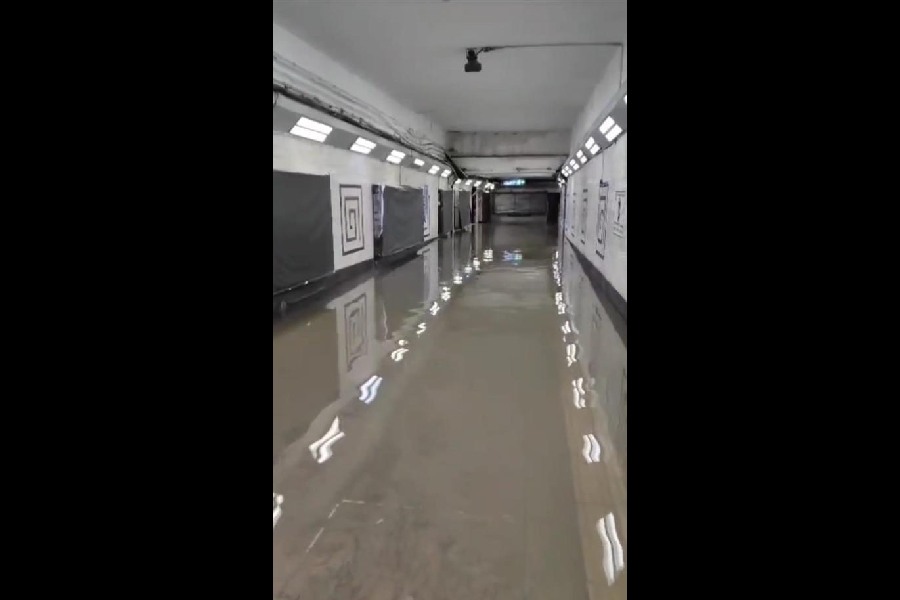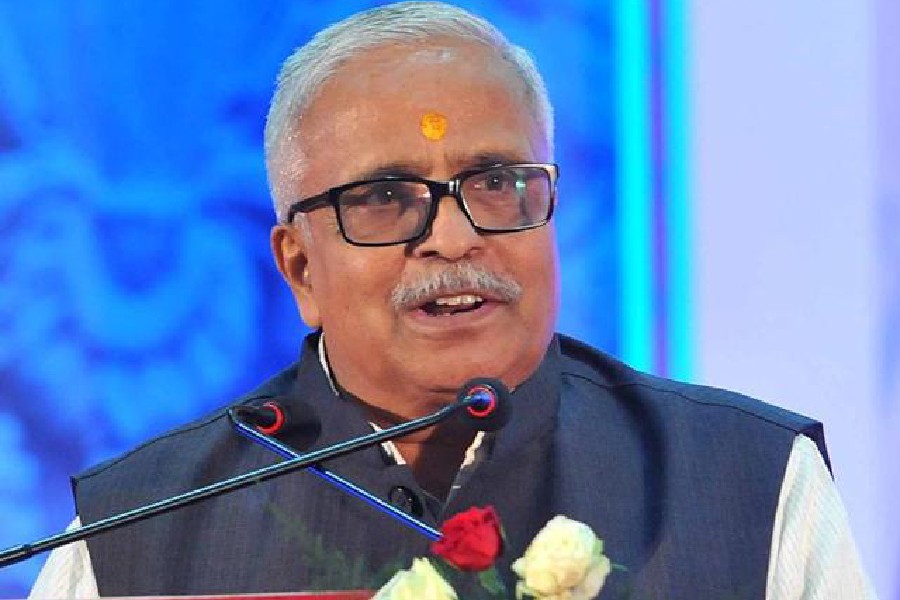Park Street Metro station was flooded during Cyclone Remal last month because of water seeping through the diaphragm wall of the station, engineers of the Kolkata Municipal Corporation (KMC) said after an inspection of the station.
The Metro Railway, however, blamed a damaged KMC sewer line for the flooding.
The Metro Railway and the KMC conducted a joint inspection on Monday.
Engineers of the Metro Railway said water seepage through concrete walls is not unusual. Leaks in a sewer line of the KMC combined with heavy rain were responsible for the flooding.
Overnight rain caused by Cyclone Remal flooded Park Street and Esplanade Metro stations, crippling the transport lifeline of Calcutta for hours on May 28.
Water seeped through “leakages” in the KMC sewage line “near” the roof of the subway at Park Street station, Metro Railway had then said.
A senior official of the KMC had then said that none from the Metro Railway got in touch with them over the issue.
The waterlogging continued for three hours, till the water was removed with pumps and buckets.
Metro Railway later wrote to the KMC seeking a joint inspection.
“Water was also seeping through the diaphragm wall on the day of the inspection. Metro Railway is aware of the seepage and they are grouting the spots of seepage,” said a KMC engineer.
Grouting is a process to fill gaps and repair cracks.
“The possible reason for flooding of the station is the combination of the seepage and the heavy rain. Because of the heavy rain, the water pressure surrounding the diaphragm wall had increased and the rate of seepage was much higher than on other days,” said a KMC engineer.
Two engineers of the KMC said there was no leak in their sewer line and Metro Railway engineers present during the joint inspection did not raise any issue of a leak.
A senior Metro Railway official, however, said the water from the “damaged” KMC sewer line entered the station through the diaphragm walls.
To be sure of any damage in the sewer line, the Metro Railway poured some colour into the sewer line. “We had put some colour in the sewer line. The same coloured water entered the station,” he said.
The drain was built in the 19th century. It is a brick drain that has suffered damage. Water from the drain seeped through the diaphragm wall, the official said.
An engineer with an infrastructure construction company, which has built several railway stations and tunnels, said the advancement in technology has made diaphragm walls more water-resistant over the years.
“The new Metro stations, like those in the East-West corridor, have water bars between two panels of diaphragm walls. The water bars are rubber membranes. The bar inflates when the water ingress exceeds the permissible limit. It prevents the water from seeping into the stations.
“The stations of the north-south Metro were built over 40 years ago. Construction then was not as sophisticated. The joints between two panels of the wall tend to weaken over the years. Extensive grouting can solve the problem,” he said.











